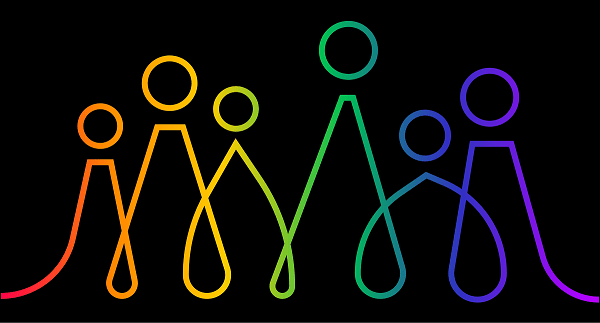An Interview With Jaclyn S. Piatak

Diversity and inclusion are generally accepted as valuable goals within nonprofit circles, but out in the wider world the concept is under broad and coordinated attack. The U.S. Supreme Court looks set to strike down the longstanding integration initiative known as affirmative action when it hears two higher education related cases in the autumn, and diversity opponents have targeted everything from the teaching of Black history in schools to non-white representation in acting roles.
Geographical diversity was already waning in the U.S., long before these latest attacks. The country has become home to more ethnic groups in larger numbers, but has become a collection of racial enclaves. More than 80% of large metropolitan areas in the U.S. were more segregated in 2019 than in 1990, which is disturbing not just on the face of it, but also because where a person lives in America has an inordinate effect upon their life chances. It determines proximity to good jobs, opportunity to attend quality schools, access to well-tended parks and open spaces, freedom from predatory finance, and how a person is approached and treated by police.
Another byproduct of segregation is that it decreases voter support for public investment and a social safety net, because in an ethnically balkanized country those expenditures are increasingly seen as benefitting outgroups. Yet diversity is one of the core issues facing the United States. It will determine whether the country will be the melting pot of its stated ideals, or devolve into something resembling its apartheid past, when such concepts as “separate but equal” legitimized consigning swaths of society to second class citizenship.
For these reasons, data gathering about diversity—its enactment, its effects, its acceptance or rejection—is important. Jaclyn S. Piatak, an Associate Professor in UNC Charlotte's Department of Political Science and Public Administration, is conducting exactly this sort of research by studying diversity and inclusion in association boards. Associations, as defined in Piatak's research, are any groups focused on a common purpose. “Associations, like corporations and nonprofits, are led by boards of directors,” she explains. “The three primary legal duties of boards are duty of care for the organization, duty of loyalty to the mission, and duty of obedience to laws, regulations, and policies.”
Piatak's background is a good fit for conducting a study of these bodies. She majored in political science at Providence College, then pursued a Masters in public policy from Johns Hopkins University, located in Baltimore. Infamous thanks to the gritty television drama The Wire, the city was a new experience for Piatak. “Moving to Baltimore, a largely racially divided city, was eye-opening,” she recounts, “especially as we worked on applied projects on housing booms in growing neighborhoods, workforce development, and prison re-entry programs.”
She also worked at the National Summer Learning Association, a nonprofit capacity-building association for summer learning programs geared toward children in under-resourced communities. She later took a job in the U.S. government at the Corporation for National and Community Service, the federal agency that oversees volunteer programs like AmeriCorps. She worked in the Office of Research and Policy Development, examining trends in volunteering across the country among different age groups and other demographics.
Piatak went on to take a position in the Office of State Plans at the Occupational Safety and Health Administration, then went back for her Ph.D. at American University. “I continued to work part-time,” she says. “I was in an office of all women, where you could see the struggles senior women faced to reach leadership positions, and the cubicle next to me was a revolving door of younger employees. The federal workforce is diverse, but I became interested in employee motivation, workplace culture, and diversity, equity, inclusion, and accessibility (DEIA) efforts. Much of my research in this area focuses on gender and race, such as inclusion and intersectionality in the federal government, gender bias in rule following, and representation in the arts.”
Piatak's study of associations was part of a Scholarly Research in Association Management Grant from the American Society of Association Executives Foundation. Building upon her interest in DEIA and patterns she found in volunteering, the goal of the project was to examine how member associations recruit and utilize volunteers in their organizations. “Board diversity is an important issue and has a variety of benefits for organizations,” she explains, “but to what extent are boards representative and volunteer recruitment and management efforts inclusive?”
The survey asked respondents to rate values such as equity in regard to their decision-making. It also asked whether diversity had been incorporated into each organization's core values, whether organizational policies had been modified to be more inclusive, whether boards had developed a detailed plan of action for inclusivity, whether diversity training for staff had taken place, and many other questions designed to gather insights from respondents about enactment and assessment of diversity within their organizations.
“I sent my initial letter of intent for the project in 2018, but received the grant in 2019 and conducted the survey in the summer of 2020 amidst the social unrest following the killing of George Floyd, the social justice movements that followed, and the initial shifts in response to the COVID-19 pandemic. In this context, many respondents saw a need for greater diversity on boards and within their associations as well as a need for greater attention to fostering a pipeline and more inclusive organizations. I think I may have gotten very different responses in 2018 than I did in the summer of 2020, and hopefully, moving forward, boards will strive to reflect the diversity of those they represent and serve.”
Piatak used the survey responses to generate statistical data, but beyond the math there were a couple of basic findings. “Board members who view their boards as implementing best practices in diversity management and as having better performance are more likely to view their boards as inclusive and take equity into account in decision-making,” she summarizes. “Diversity management not only influences the culture of boards, but also shapes values in making major decisions on behalf of the association.”
Such values are anathema to opponents who see diversity as a zero-sum game. How does Piatak propose to sway such people? “There are several ways to make the case for diversity. A major part of my midterm exam in teaching human resources management is for students to write a letter to a leader of a government or nonprofit organization about the need for greater diversity, equity, and inclusion efforts, selling the leadership on the need for and benefits of diversity along with recommendations on how to move forward. First, there’s the business case for diversity, where diversity enhances innovation, ideas, and organizational outcomes, just to name a few. Then there’s the representation argument where organizations, like elected officials, should reflect and represent the populations they serve. This is called representative bureaucracy in government agencies, but many nonprofits are also called to reflect the populations and communities they serve. However, ensuring diversity, equity, inclusion, and accessibility is also just the right thing to do.”
Considerations of right and wrong can feel as if they've receded into the distance in a country immobilized by political gridlock and riven by online warfare. Misinformation is rampant and deliberate—for example the stirring up of panic over Critical Race Theory in order to ban the teaching of any American history that even whispers about slavery or Jim Crow. But increased diversity in decision-making bodies can help move the needle on equality. The alternative, as Piatak writes in her paper co-authored with Alexandra Olivares, Exhibiting Inclusion: An Examination of Race, Ethnicity, and Museum Participation, is to risk becoming irrelevant.
“With the simultaneously growing diversity and polarization of the U.S., advancing diversity and inclusion in the leadership of associations is vital,” Piatak asserts. “Association boards should strive to reflect the diversity of their members and the communities they serve and be inclusive to ensure all members have a voice in guiding the organization. They should strive to be diverse not just for the good of the organization’s performance, but also for those they serve and the good of society.”
 ABOUT DR. JACLYN PIATAK
ABOUT DR. JACLYN PIATAK
Associate Professor
Department of Political Science and Public Administration, University of North Carolina at Charlotte
Dr. Jaclyn Piatak is an Associate Professor in the Department of Political Science and Public Administration at the University of North Carolina at Charlotte and teaches courses in the Gerald G. Fox Master of Public Administration Program. Her research focuses on public and nonprofit human resources management, volunteering, and the delivery of public services. As of July 1, 2022, she will be co-editor of Nonprofit and Voluntary Sector Quarterly.